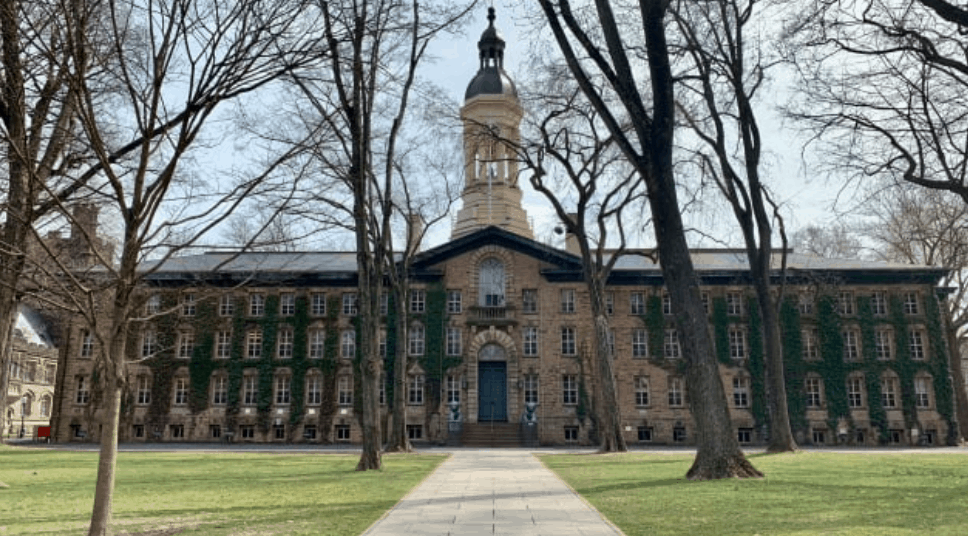With enrollment numbers plunging, some colleges and universities are taking an aggressive approach to lure students back.
One school is slashing the price for first year students to zero.
Amid the coronavirus and economic downturn, financial constraints have finally put a limit on what families can afford to pay, while many also contend that remote learning is just not worth the same as face-to-face instruction — causing some would-be college students to rethink their plans altogether.
As campuses shut down due to Covid-19, a growing list of universities, including Princeton, Georgetown and Johns Hopkins, offered a 10% discount on tuition for students studying remotely to account for changes in the college experience.
Williams College in Massachusetts and Hampton University in Virginia reduced tuition and fees by 15% for the current academic year.
“This reduction recognizes the fact that the pandemic and associated challenges are requiring us to cancel winter study as well as fall athletics competition and many student activities, among other opportunities that we usually encourage families to expect as part of their student’s education,” Williams president Maud S. Mandel wrote in a letter to the community.
Paul Quinn College in Dallas, slashed the cost of attendance even further after deciding to remain fully online in the fall to $5,996 from the in-person price of $8,321.
“We understand that this is a time of great uncertainty and unrest,” President Michael Sorrell wrote in a letter.
For years, college costs have crept higher and higher, creating an affordability crisis for students and their families.
The Great Recession led to declining funds from state and local governments, forcing many colleges to rely on tuition as a primary source of revenue.
As a result, the cost of attendance has steadily ticked up, rising 3% to 5% every year, outpacing inflation and family income.
Now, in the middle of the pandemic, schools are under more pressure to keep these increases in check.
Overall, average tuition and fees increased by just 1.1% for in-state students at four-year public colleges and 2.1% for students at four-year private institutions in the 2020-21 academic year — the lowest percentage increases in three decades, according to the College Board, which tracks trends in college pricing and student aid.
Already, a number of institutions announced they are freezing tuition next year in hopes of attracting more students and families struggling with the weight of a higher-education tab during the ongoing economic crisis.
That could just be the start.
Beginning next fall, Rider University said it will reduce its undergraduate tuition for new students by 22% to $35,000 from $45,120.
Fairleigh Dickinson University announced it will similarly slash tuition for all new students on the New Jersey campuses in fall 2021 to $32,000 — a 22% to 25% discount from the current cost.
And, in a stunning move, Southern New Hampshire University said is offering a free year for first-first time freshmen on campus this fall and discounting tuition by more than 60% next year as well.
After SNHU’s announcement, enrollments on campus spiked 45% compared to fall 2019. The incoming fall first-year class is now the largest in SNHU’s history by a significant margin, according to the school.
Of the colleges that are offering a tuition discount, some, like Princeton and Williams, are among the nation’s most elite, high-endowed private schools, according to Jim Hundrieser, a vice president at the National Association of College and University Business Officers, a professional organization for finance officers in higher education.
For these schools, a temporary reduction in tuition is an appropriate, and affordable, response, he said.
But there is also “a pocket of schools that have been struggling to attract the number of students they want or need to attract, and they are looking more creatively at their costs.”
For this group, resetting tuition next year with the aim of bringing in more students “is a gamble — there is no question about it,” Hundrieser said.
Some colleges have, in fact, tried this strategy before as a means of getting more students to apply and growing the student body without diminishing the school’s competitive ranking.
Roughly three years ago, Drew University, another New Jersey-based private college, announced it would lower the price of its tuition by 20%.
“We have to have our finger on the pulse of how students are making choices,” Drew’s then-President MaryAnn Baenninger said at the time.
The following year, the number of applicants jumped 18% and the university’s selectivity improved as well as its value ranking, according to the school.
“Given the fear that students and parents feel about college costs in general, any school that says ‘we see you and we hear you’ — that is a direct message to students and I suspect it’s one that’s going to be applauded,” said Robert Franek, The Princeton Review’s editor-in-chief and graduate of the Drew University Class of 1993, as well as a member of the university’s Board of Trustees.

